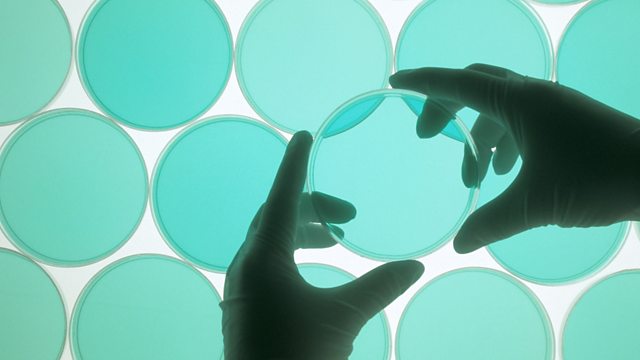26/01/2012
Enormous fresh water dome in Arctic Ocean discovered, which could impact European climate. Panama Canal upgrade could change ship design + reduce emissions, DNA fingerprinting advance + magnetic soap
Arctic freshwater dome
Scientists have discovered an enormous build up of fresh water in the Arctic Ocean, which of course is normally salty. It sounds bizarre but for some reason the fresh water is staying separate and building up into a dome. They’ve used satellite measurements to figure out that the sea surface has risen around 15cm in the last 10 years. Dr. Katherine Giles from the Centre for Polar Observation and Modelling (CPOM) at University College London came into the Science in Action studios to tell us more. She thinks it could be because of strong winds creating a circular ocean current, or gyre, and as we’ll hear any changes in that current could have huge implications for the weather and climate in Europe.
Panama Canal upgrade
The Panama Canal. It’s now nearly 100 years old, and due for a major facelift.
The width of the canal has long been a constraining factor in ship design – they can’t be any wider than 32.3 metres if they’re going to fit through. And that has actually been a constraint worldwide – no-one will build ships wider than that so called Panamax limit. Paul Stott from Newcastle University has just published research in the International Journal of Maritime engineering, showing that redesigning the canal, widening it, could have worldwide ramifications. People will start designing and building wider, more fuel efficient ships. So re-engineering one canal will help reduce the carbon footprint of the entire shipping industry.
Food on your fingerprints
Fingerprints are a favourite of all good crime dramas – finding one can unmask a culprit. But soon the script writers of TV shows like CSI are going to have some new material to play with. It turns out that fingerprints can unveil much more information that just identity. Doctor Simona Francese and her team at Sheffield-Hallam University can tell you what sorts of substances the possible culprit has touched lately, and even if he’s been overdoing the coffee… all of which could allow investigators to build up a very detailed profile of an individual at a crime scene. Our reporter Nelida Pohl went to have a look at the latest in forensic fingerprinting techniques.
Magnetic Soap
Every one of us uses, on average, 10kg of soap, every year, sometimes in was we don’t realise – like brushing our teeth. And all that soap goes down the drain.
Soap – in the form of dispersants – is also used to try to clean up after oil spills, as we saw in the Gulf of Mexico. Again we don’t have much control of where that soap goes once it’s released. So Professor Julian Eastoe, from the University of Bristol developed a magnetic soap, which can be controlled, moved around, and gathered up much more easily.
Last on
Broadcasts
- Thu 26 Jan 2012 19:32GMTΒι¶ΉΤΌΕΔ World Service Online
- Fri 27 Jan 2012 04:32GMTΒι¶ΉΤΌΕΔ World Service Online
- Fri 27 Jan 2012 12:32GMTΒι¶ΉΤΌΕΔ World Service Online
- Sat 28 Jan 2012 06:32GMTΒι¶ΉΤΌΕΔ World Service Online
- Sun 29 Jan 2012 00:32GMTΒι¶ΉΤΌΕΔ World Service Online
Podcast
-
![]()
Science In Action
The Βι¶ΉΤΌΕΔ brings you all the week's science news.


